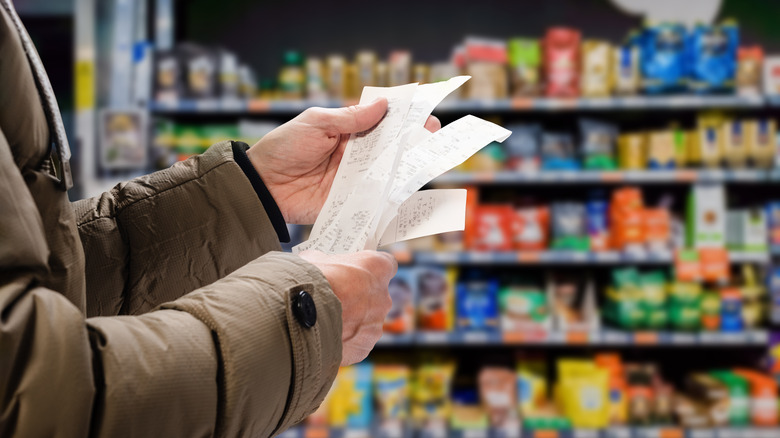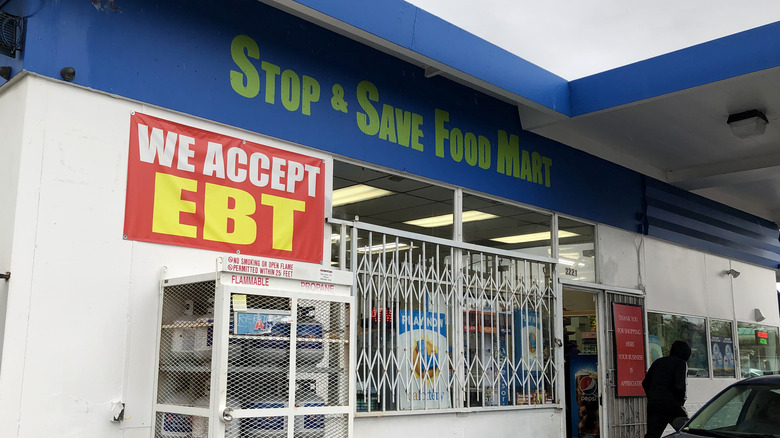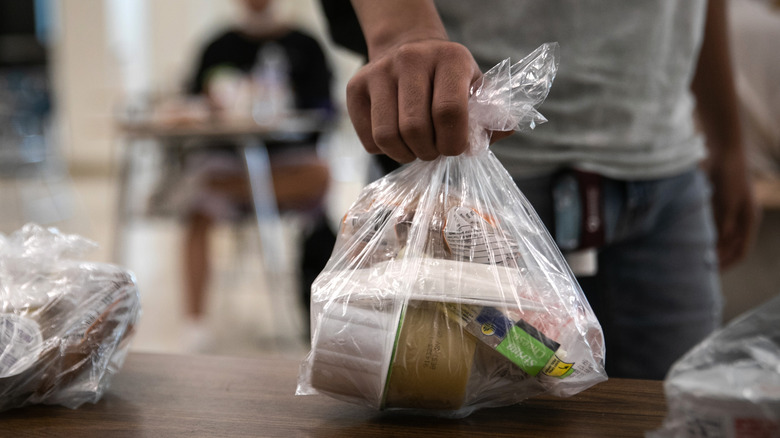How The Upcoming SNAP Benefit Decrease Will Impact Recipients
When COVID-19 was declared a global pandemic by the World Health Organization back in 2020, and as shelter-in-place orders took effect, Congress got to work by pushing legislation aimed at supporting the most vulnerable in the country. One of those initiatives included giving lower-income families better access to federal food assistance by cutting red tape in order to help deal with food insecurity. That assistance was distributed through the Supplemental Nutrition Assistance Program or SNAP.
The benefits were meant to stay in place for as long as there was a public health emergency and included a clause giving all families at least $95 a month where applicable, plus $28 worth of SNAP benefits per person per family, among other extensions.
But with all the states winding down COVID emergency status, it was only a matter of time before SNAP came to an end, which it finally did in February 2023 for 32 states, including California, Colorado, Michigan, and Vermont. Massachusetts beneficiaries received their last SNAP payments on March 2. Other states like North Dakota, Florida, Tennessee, and Mississippi wrapped up their SNAP assistance in 2021; a few more, including Georgia and Alaska, put a halt to their program in 2022.
The end of SNAP assistance will impact 16 million Americans
Without the COVID-related SNAP adjustments, lower-income families have lost the $95 a month they had been receiving since March 2020, but the total amount varies. Some media reports are estimating losses in the hundreds of dollars in food assistance per month for some, like Deanna Hardy and her husband, who are both on disability. With the end of COVID-related emergency SNAP, their food benefits go from $960 to $200 a month — and they still have to provide for their two young sons, per ABC. Some recipients who qualify for SNAP will also end up receiving just $6 per day after the adjustments take effect. The end of SNAP benefits is expected to hurt as many as 16 million Americans.
It's not lost on beneficiaries that SNAP benefits are returning to pre-pandemic levels at a time when the prices of groceries from cereals to eggs, as well as milk, bread, and ground beef, are soaring. CBS estimates that consumers could be paying nearly 20% more for groceries by the end of 2023 than they were in 2021. Unfortunately, that's also the last time that SNAP benefit payments were recalculated to reflect changes in food prices. Before that, SNAP was based on how much things cost in 1975.
Some state governments are filling the gap
Ellen Vollinger, who is SNAP director at the non-profit Food Research & Action Center, has warned that "a hunger cliff" is coming and that it would hit a good number of states, where "people will on average lose about $82 of SNAP benefits a month," which she called "a stunning number," per CBS.
Even if the federal government is ending SNAP, a number of state governments aren't leaving recipients out in the cold. Some state-level agencies like New York State's Office of Temporary and Disability Assistance are urging families to ensure their expenses, from housing to childcare and medical expenses, are calculated and reported properly because it could bump up their SNAP benefits. It's also urging recipients to ensure they get access to other local- and state-funded food assistance programs aimed at helping specific individuals, from women, infants, and children to the elderly. Other states like Massachusetts also offer additional benefits like cash back with fruit and veg purchases from local vendors affiliated with its Healthy Incentives Program.
Children from homes that are on SNAP are further given access to free meals at school, and there are programs aimed at low-income seniors who are aged at least 60, which include coupons for fruits and veg at farmers' markets.


